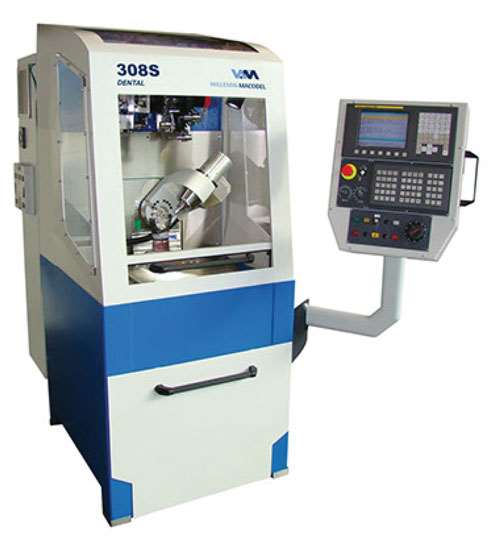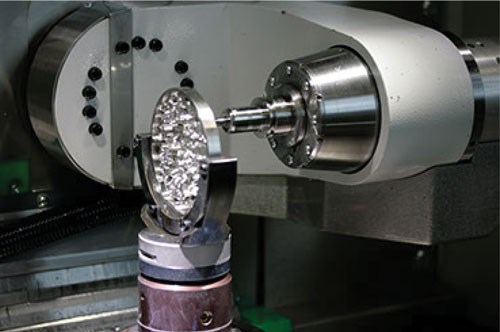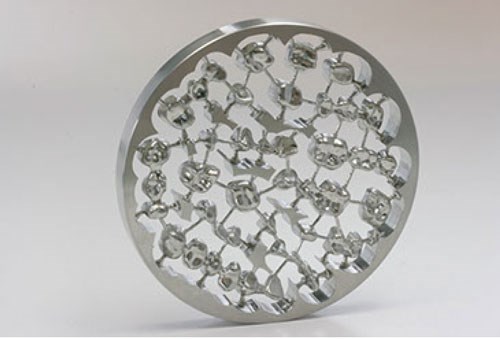Small, But Mighty
Machining center designed for small spaces.
Earlier this year, PM had the opportunity to visit Willemin-Macodel’s plant in the beautiful Jura region of Switzerland. On this visit, our hosts Patrick Haegeli, deputy general manager, and Julian Bardullas, project manager, pulled back the curtain on a new machine designed for medical machining that will be seen for the first time at IMTS.
Featured Content
Like several other builders, Willemin has identified a burgeoning market in manufacturing for the medical arts. Although many shops make parts and assemblies for the medical industry, this new class of vertical machining center is different because its targeted audience is not necessarily machine shops, although they can use it, too.
Early on, company staff designed and built bar fed machining centers for the precision metalworking market offering three-, four- and five-axis capability.
Bar feeding a vertical machining center solves one of its inherent disadvantages by stretching the time needed to process a table load of workpiece blanks. The bar feed also simplifies workholding. In numerous applications, these machines, equipped with magazine loaders, run lights out.
The company calls its new model the 308s Dental, and as Mr. Haegeli explains, this new five-axis machining center was developed to meet the requirements of dental labs. One of the first such requirements is that the machine must fit through the door of a lab, which is significantly smaller than most doors in shops. This general specification requires a machine width of no more than 36 inches.
Even with this small footprint, the 308s is fully capable of processing complex, five-axis parts in titanium, chromium-cobalt, zirconium and other exotics used in the dental and medical industry. Compact as it is, the machine achieves its multi-axis flexibility using a high speed spindle mounted on a rotary axis that swings ±110 degrees in combination with either a B or C axis with 220 degrees and 360 degrees respectively.
It also has a 32-tool capacity automatic tool changer. For continuous or batch operation, the machine can be equipped with an automatic loading, unloading system for parts or pallets, depending on lot size requirement.
During development of this machine, according to Mr. Bardullas, the company kept simplicity in mind. Willemin wanted the operation of the five-axis machining center to be simple for the lab technicians charged with running it. The goal, Mr.Bardullas says, was to use scanning, modeling, CAM programming, machine operation and traceability with interface simple enough to be taught in only 1 day.
As can be seen on the accompanying photographs, a nesting software package is also used on the machine to minimize material waste. A model 308b is in the development stages that will be bar fed to further maximize material use within a 36-mm (1.25-inch) diameter.
The software components are designed to move the operator/lab technician seamlessly through programming, setup, operation and optimization. The NC management system uses a PC interface that is easy to use, allowing for quick adaptation to the machine.
Having seen this machine in action at the Willemin plant, it is certainly not to be confused with a “toy” in spite of its size. The model 308s is a fully capable simultaneous five-axis machining center that is well scaled for the work it is designed to perform. While attending IMTS, take a minute to visit the company’s booth (S-9341) and check out this machine and others on display. It might fit a niche in your shop.
RELATED CONTENT
-
Adjusting to Unleaded
A move is afoot to get lead out of plumbing pipes and fixtures that carry potable water. It's the law in California and could be to your state.
-
Human-Like Robot Automates Secondary Machining Operations
Two seven-axis robots enable two second-op mills to run lights out eight hours in the evenings to win 64 hours of unattended machining time per week for this Ventura, California, shop.
-
Smart Machining Centers
These days, precision machine shops are often looking to expand the range of work they can take on profitably. It is not enough, in many instances, to be exclusively a turning shop.









